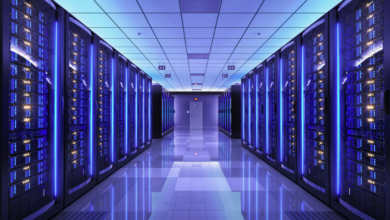10 Reasons Why Desktop Computers Remain Essential for Graphic Designers

Some consider modern-day laptops, tablets, and smartphones to be powerful enough, convenient and portable so that they can fully or almost fully replace PC computers. While PC portability is possible, the workstation experience cannot be changed for professional visual creatives.
Although handheld gadgets have seemingly completely altered the manner in which we operate and exist, they are still not appropriate to use when doing graphics-related tasks that require high computational power, complex files and prolonged focus. The narrow screens, overcrowded inputs, and heat constraints of most virtual reality systems limit a designer’s creative ability and make intense work a frustrating experience when compared to a large desktop station.
Let’s explore 10 key reasons why desktops are still invaluable for visual creatives.
Reason #1: Superior Processing Power
One of the biggest advantages of desktop computers is their processing power. PC CPUs and GPUs are significantly more powerful than those found in laptops and mobile devices. Graphics and video editing require intensive processing that portable devices simply can’t match. The ability to smoothly work with large, complex files is crucial for designers, and PCs deliver unmatched performance for these tasks.
Reason #2: More Expansive Screen Real Estate
Desktop monitors provide vastly more screen space than laptops or mobile devices. Design work benefits tremendously from the ability to see more of your project at once. Multiple large, high-resolution screens allow designers to keep toolbars, layers, and references visible while working on their core designs. The screen real estate of even multi-monitor laptop setups pales in comparison to PC displays.
Reason #3: Greater Customization Options
PCs have a reputation for being quite customizable, both in terms of hardware and the installed software. Designers can configure PCs with precisely the components they need: booming processor generation and graphics, plenty of RAM and storage, and particular input devices. Peripherals, including drawing tablets, memory devices and extra monitors, may be easily plugged in with a single USB input. This level of customization is a great deal to achieve with notebooks (laptops).
Reason #4: Lower Total Cost of Ownership
While high-end PCs have higher upfront costs than portable devices, their total cost of ownership over a period of years is lower. Desktop computer components are upgradeable, allowing designers to boost performance over time through targeted, affordable upgrades. In contrast, entire laptops need replacing every few years as their internal components become outdated. Refurbished and previous-generation PC parts are also very affordable options for designers on budget.
Reason #5: Greater Reliability and Durability
The stationary nature of PC computers makes them more robust and durable than portable laptops, which are moved around daily and face greater risks of accidental damage. PC components are also better able to dissipate heat without thermal throttling. This reliability is important for designers who depend on their tools for client work. Spilled drinks, bumps, and drops may cripple a laptop but have little effect on a PC. Maintenance is also simpler with PCs that can be easily accessed, cleaned, and repaired.
Reason #6: Better Value for Money
For the same budget, a PC will deliver significantly better specifications and performance than a laptop or tablet. This means designers get more power for their dollar, which is important as technology costs eat into business revenues. PCs also retain resale value as their components remain relevant longer. So designers can upgrade and still recover a good portion of their initial investment through used sales. This ongoing value makes desktops the smarter financial choice.
Reason #7: Superior Input and Connectivity Options
PCs support a much wider variety of input devices that boost productivity for designers. Graphics tablets, digital pen displays, and multi-monitor setups can all be seamlessly integrated. Connectivity is also better with PCs, which typically feature more generous I/O through USB ports, display outputs, networking jacks, and expansion slots. This allows designers to easily transfer, archive, and back up large project files. It also facilitates smooth collaboration through shared network resources.
Reason #8: Unmatched Expandability and Upgradability
One of the greatest advantages of desktop PCs is their incredible longevity, thanks to high upgradability.
- While portable devices become obsolete after a few years, a well-built PC can remain relevant for over a decade with strategic upgrades.
- All of its core components, from the CPU and GPU to memory, storage, and even the power supply, can be individually replaced or augmented as needs and budgets allow.
- This modular approach future-proofs the system and ensures PCs never become technological deadends like outdated laptops. As newer, more powerful parts enter the market, designers can simply unplug the old and plug in the new.
- A CPU or graphics card swap for a few hundred dollars breathes new life into the system. This allows PC workflows to continuously evolve alongside advancing software without needing a whole new machine.
- The ample internal space in computer towers also makes component upgrades and additions hassle-free.
- Newer, larger-capacity SSDs and HDDs can be installed as storage demands grow from high-resolution asset libraries.
Additional PCIe slots allow upgrading with specialized graphics cards purpose-built for tasks like 3D rendering. Even expansion cards can transform the system, such as RAID cards for ultra-fast storage arrays or I/O cards adding new ports.
Reason #9: Ideal for Multitasking Workflows
Visual design tasks often involve lots of moves between multiple complex applications and document plans at the same time. Desktop computers will always be at home with their big cross-processors and huge RAM for those highly resource-intensive tasks. Most no-code platforms come with lots of multiplex, high-resolution screens that allow users to keep all tasks and references that they find necessary within their reach. This results in a simple process flowing through several apps, aside from the projects that are complicated.
Reason #10: Enhanced Creative Focus
PC’s large displays and stable work surface provide an ideal environment for focused creative work. The small screens and keyboards of laptops do not deter designers. The desktop also gets tucked away out of sight when not in use, avoiding visual clutter. This allows full concentration on projects without distractions. Some designers even find portable devices disruptive, as they encourage working on the go instead of deep, focused creativity.
Final Words
Laptops and tablets have their place, but nonetheless, the desktop computer remains unavoidable in the work of graphic designers. It is the unrivaled power of the Mac, its large screen, its robust upgradeability and its portability for workflow-intensive uses that set it apart from other computers as an optimal choice for professional visual creatives. Making thoughtful hardware choices can result in desktop PCs that give you performance and value unmatched by any other PC technology.



